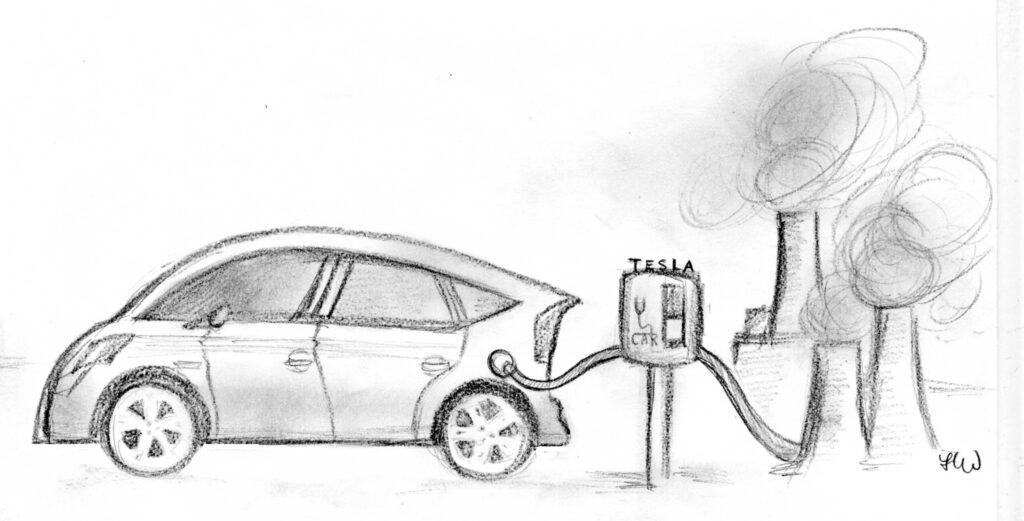This August, Tesla Motors announced that it will open its first Bay Area electric car service center in San Rafael. While many environmental activists applaud this move, it has significant economic and environmental drawbacks.
Electric cars have been praised by car companies and environmental groups for their supposed “eco-friendliness” because they are powered by “zero-emissions” electricity. Unfortunately, a majority of this electricity is produced by burning coal and petroleum, which still releases harmful pollutants into the atmosphere.
According to the U.S. Department of Energy’s 2010 annual energy report, 74 percent of our country’s electricity came from fossil fuels and petroleum, while only 8 percent came from renewable energy sources.
Furthermore, electric cars create solid waste in the form of car batteries. Whereas defunct gas engines are reused, electric car batteries cannot be recycled safely, and are thus disposed of in landfills.
Electric cars must also have their batteries replaced during their lifetime, since the batteries’ ability to hold a charge diminishes over time. Tesla Motors estimates that its batteries will last approximately five years, and then the battery will need to be replaced, for about $10,000.
Since the number of electric cars on the road is limited, battery disposal has not yet presented a huge a problem. But as the number of electric cars increases, more used car batteries will fill landfills, further compounding the trash problem. According to the New York Times, by 2020, about half a million batteries from electric cars will have to be disposed of annually.
When electric cars first became popular, one of the main selling points was the cars’ noise level. When driving an electric car, the engine is barely audible to the driver and the passengers.
Unfortunately, the engine noise is also inaudible to pedestrians and outside traffic. This creates a huge problem to blind pedestrians who rely on a car’s engine noise to gauge its distance from themselves. In a 2011 study, the National Highway Traffic Safety administration found that hybrid cars (running on their electric motors) have a higher collision rate with pedestrians and cyclists than do gas-powered cars.
If a blind pedestrian cannot hear the approaching electric car, it presents a dangerous situation for both the pedestrian and the driver, as well as surrounding traffic.
Perhaps the most prohibitive factor in the developing electric car industry is the cost. The baseline price for electric cars is substantially higher than that of regular cars.
The Nissan Leaf, one of the least expensive electric cars on the market, sells for $35,000 after the $8,000 federal rebate. The cheapest Tesla Model S electric car starts with a baseline price of $50,000 after the rebate.
Not only are electric cars substantially more expensive, but the price for changing the transportation infrastructure is also quite expensive. The cost for the actual electricity to charge the car is relatively insubstantial, but completely revamping gasoline stations to incorporate electric vehicle charging areas will prove to be excessively expensive.
The basic electric charging stations cost anywhere from $5,000 to $20,000 to build individually. According to the website Digital Trends, New York is spending $4.4 million on 325 charging stations. This equates to a staggering $13,000 per station!
Since electric car batteries drain quickly and charge extremely slowly (ranging anywhere from 3-8 hours for a full charge), these charging stations will need to be built extensively throughout metropolitan areas, further adding to the cost.
While electric cars provide some (debatable) advantages, this much is clear: The current day electric car is not quite ready to solve the world’s pollution conundrum.


























